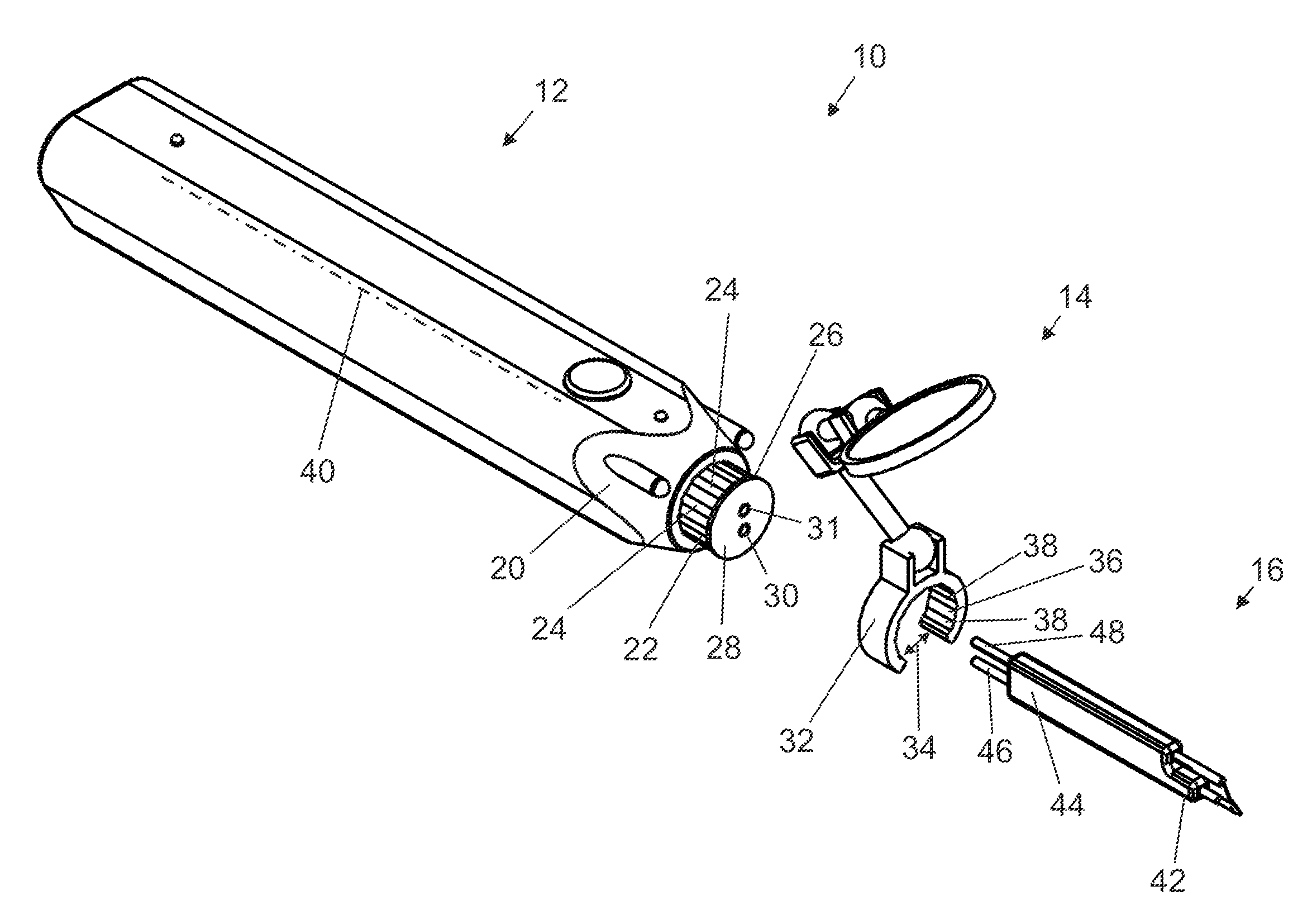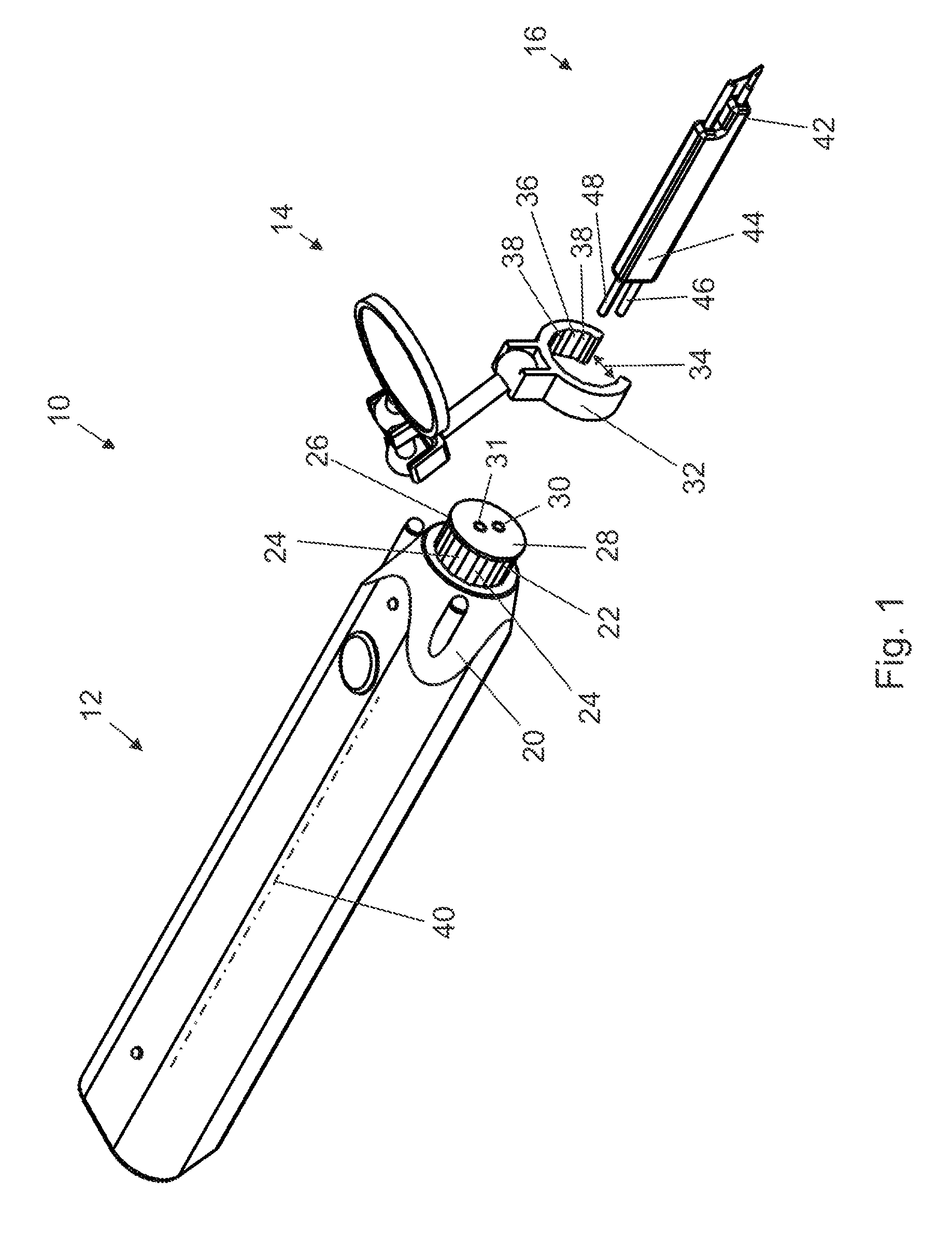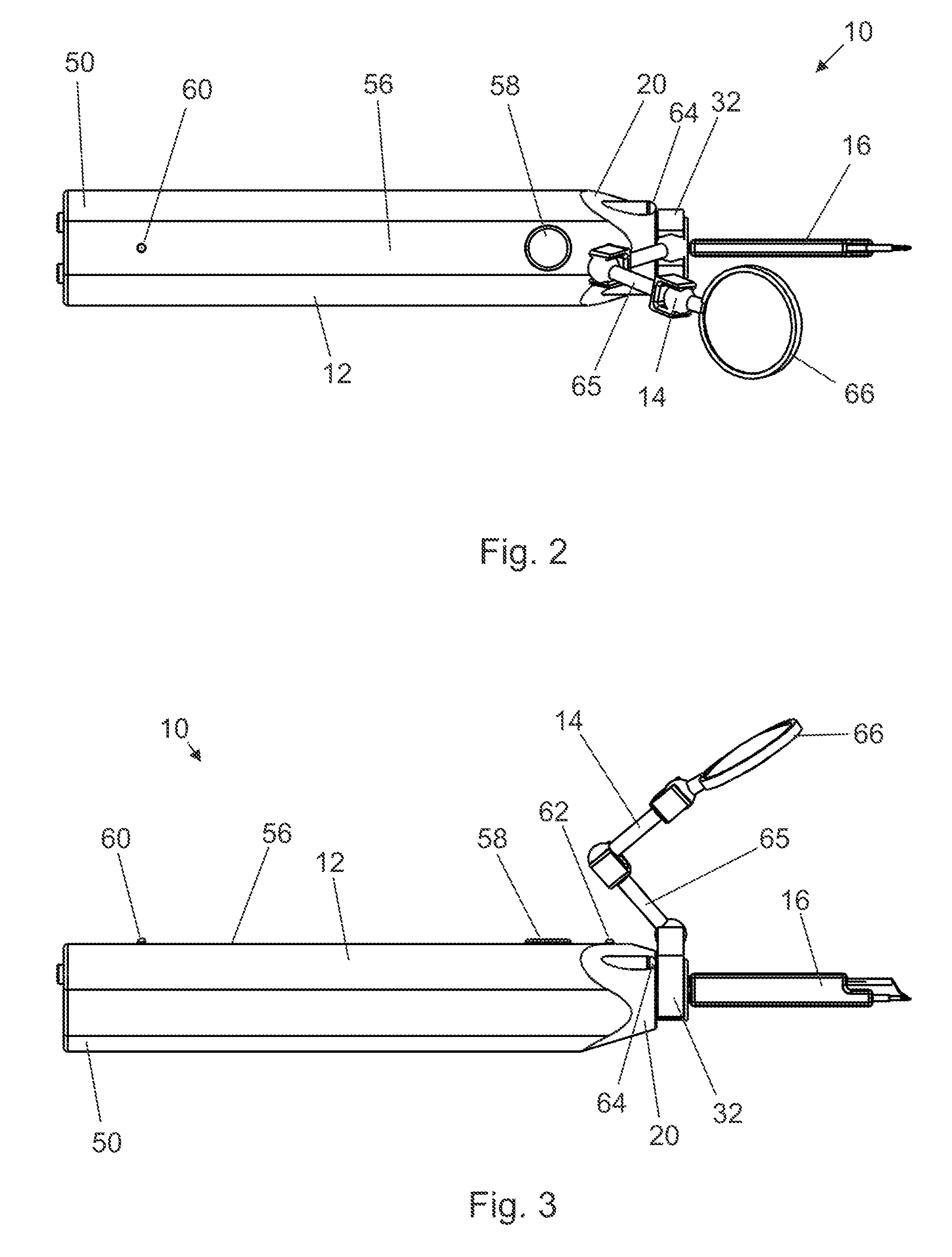Method, apparatus, and kit for thermal suture cutting
a technology of thermal suture and suture blade, which is applied in the field of suture removal, can solve the problems of increasing patient discomfort, affecting patient comfort, and affecting patient comfort, so as to minimize patient discomfort, tissue disruption and bleeding, and less suture tension
- Summary
- Abstract
- Description
- Claims
- Application Information
AI Technical Summary
Benefits of technology
Problems solved by technology
Method used
Image
Examples
Embodiment Construction
[0080]In the context of the present invention, the following definitions apply:
[0081]The term “suture” is used to refer both to the fine thread or other material used surgically to close a wound or join tissues and to the stitch so formed.
[0082]The term “distal” refers to that end or portion which is situated farthest from the hand of the operator and closest to the body of the patient when the device is in use.
[0083]The term “proximal” refers to that end or portion situated closest to the hand of the operator and farthest away from the body of the patient when the device is in use.
[0084]The accompanying figures, described in detail below, illustrate aspects of the invention but are in no way intended to limit the scope of the present invention.
[0085]Referring to the figures showing a suture cutter 10 constructed in accordance with the principles of this invention, FIG. 1 depicts an exploded view of suture cutter 10, cutter 10 having a first, proximal assembly 12 forming a handle, a...
PUM
 Login to View More
Login to View More Abstract
Description
Claims
Application Information
 Login to View More
Login to View More - R&D
- Intellectual Property
- Life Sciences
- Materials
- Tech Scout
- Unparalleled Data Quality
- Higher Quality Content
- 60% Fewer Hallucinations
Browse by: Latest US Patents, China's latest patents, Technical Efficacy Thesaurus, Application Domain, Technology Topic, Popular Technical Reports.
© 2025 PatSnap. All rights reserved.Legal|Privacy policy|Modern Slavery Act Transparency Statement|Sitemap|About US| Contact US: help@patsnap.com



